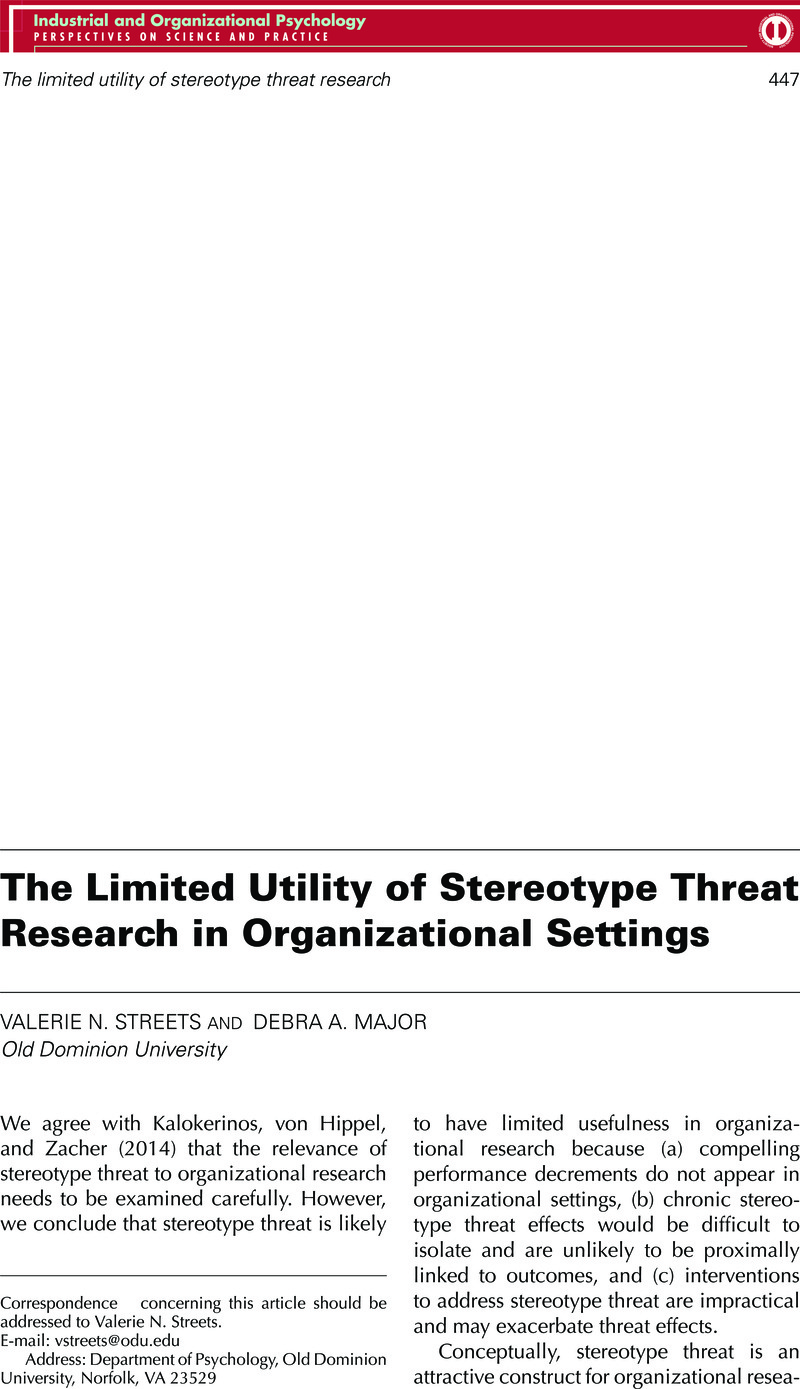Crossref Citations
This article has been cited by the following publications. This list is generated based on data provided by Crossref.
Kulik, Carol T.
Perera, Sanjeewa
and
Cregan, Christina
2016.
Engage Me: The Mature-Age Worker and Stereotype Threat.
Academy of Management Journal,
Vol. 59,
Issue. 6,
p.
2132.
Casad, Bettina J.
and
Bryant, William J.
2016.
Addressing Stereotype Threat is Critical to Diversity and Inclusion in Organizational Psychology.
Frontiers in Psychology,
Vol. 7,
Issue. ,
Oliveira, Eduardo André da Silva
and
Cabral-Cardoso, Carlos José
2018.
Buffers or Boosters? The Role of HRM Practices in Older Workers' Experience of Stereotype Threat.
The Journal of Psychology,
Vol. 152,
Issue. 1,
p.
36.
Swab, R. Gabrielle
Javadian, Golshan
Gupta, Vishal K.
and
Pierce, Charles A.
2022.
Stereotype Threat Theory in Organizational Research: Constructive Analysis and Future Research Agenda.
Group & Organization Management,
Vol. 47,
Issue. 3,
p.
530.
Cruz, Mateo
and
Nagy, Noémi
2024.
Profiles in persistence: A latent profile analysis of multilevel coping strategies enacted among women in the sciences.
Journal of Organizational Behavior,
Vol. 45,
Issue. 3,
p.
362.





